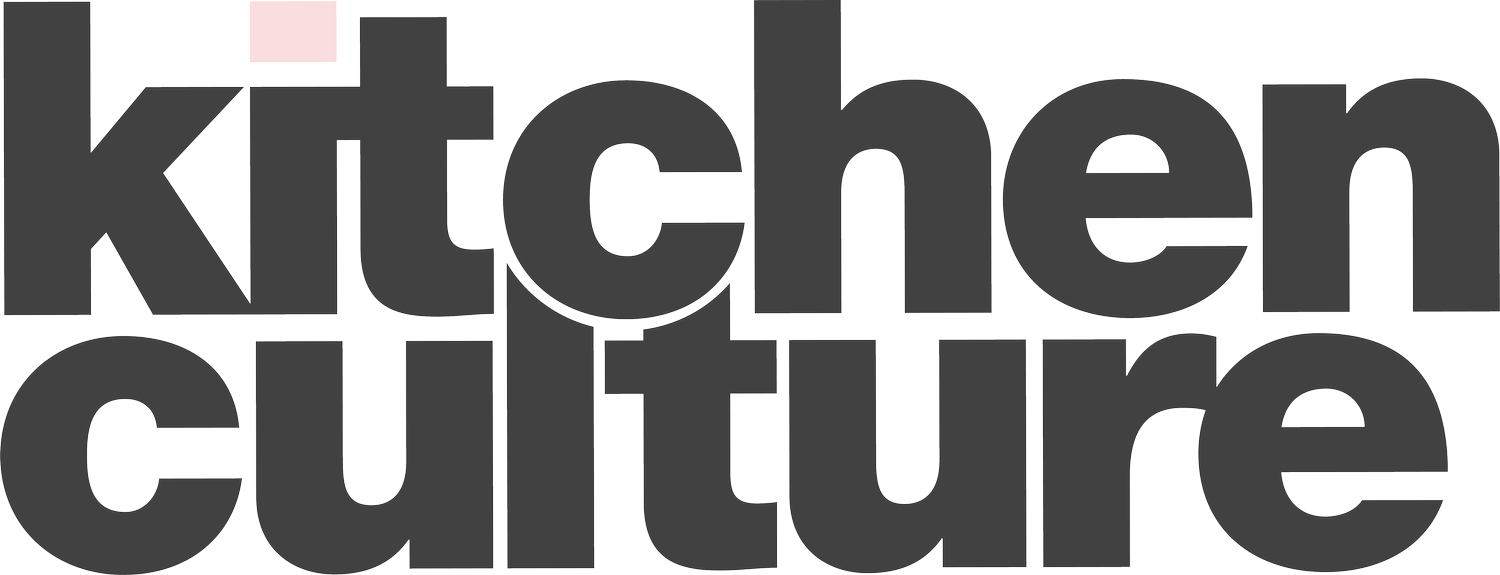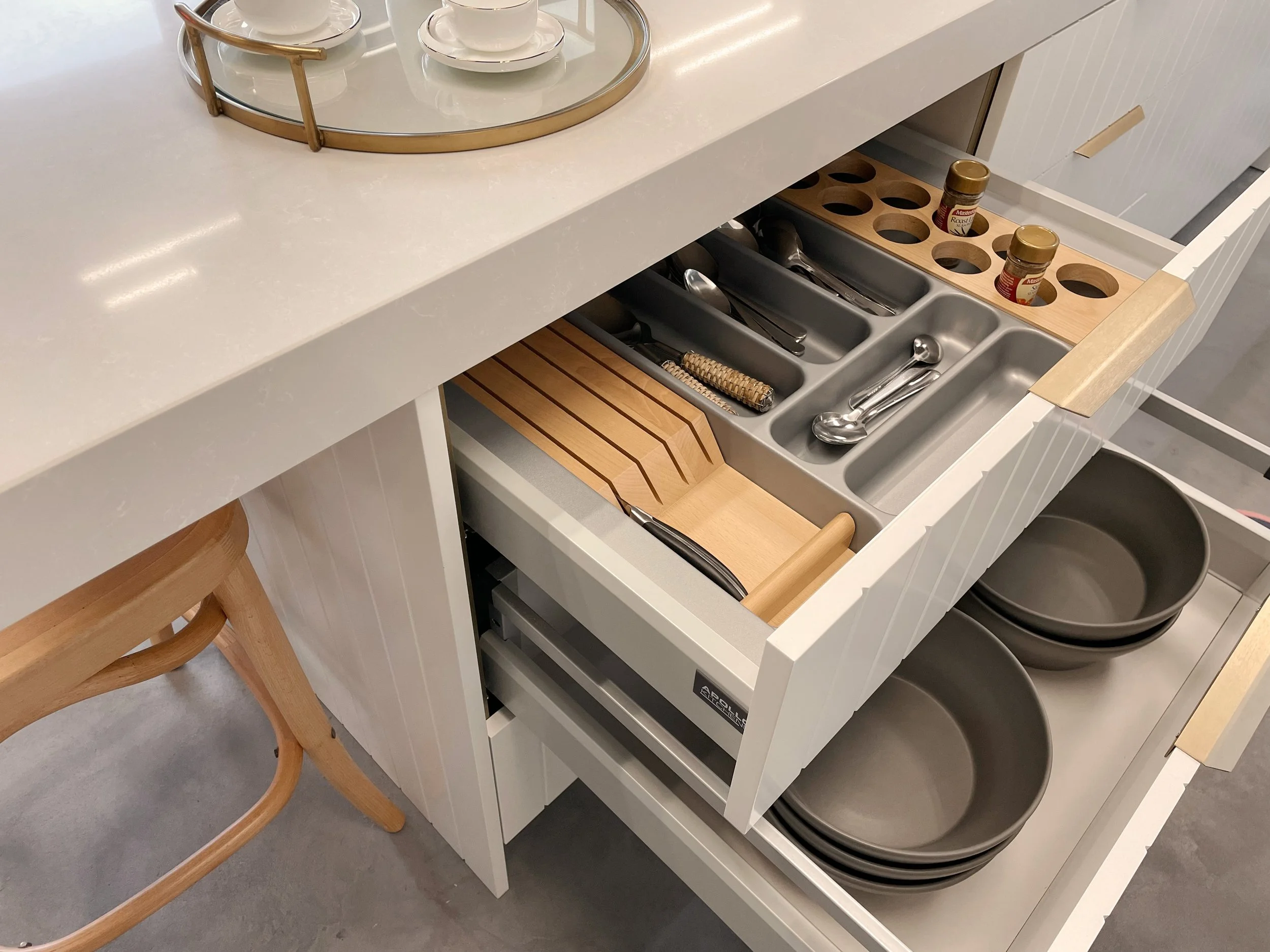Don't Let Your Utensils Run Wild - Tame Them with These Innovative Drawers
If you have experienced the search for that one container lid somewhere in the back of your cabinet that you really need, read on.
Adding drawers to your kitchen takes convenience to the next level, providing storage space for utensils, cutlery, and so much more. However, with so many different types and configurations available, it can be challenging to determine which one is best for your needs. Well thought-out planning and design will have you moving around in sync with what you are doing.
Sink Drawer
Sink cabinets can end up being the place you do not want to know about! However with a sink drawer organisation is made easy.
Great for storing cleaning utensils, washing detergents/tablets, sponges, bin liners, cloths. Ensure you consider plumbing when adding a sink drawer to your design layout
Bin drawer
We recommend adding the bin drawer next to your sink cabinet. Pull out bin drawers are available in wide range of sizes so you can get the right fit for your provision.
Corner drawer
Corner drawers are a type of kitchen drawer that is designed to maximise storage space in corner cabinets. They are typically L-shaped and feature two sets of drawers that pull out from the corner. Corner drawers are ideal for storing large items such as pots and pans and can be customised with dividers.
Spice drawer
If you use spices and herbs on a daily basis, a spice drawer next to your cooktop can be a game changer in the kitchen. They do not require a lot of space so you can still add drawers below for other items such as pots or plates.
Deep Drawers
Best suited for pots, consider the height/width of your pots.
Consider how many pots you will be storing when deciding on the quantity of deep drawers, you do not want to end up with to little or to many deep drawers.
Standard Size Drawers
Standard drawers are the most common type of kitchen drawer, and they come in various widths and depths. When it comes to organising your drawers, it's all about personal preference and how often you use the items, which is the great thing about designing and organising your own layout. General items to consider when designing your layout include:
Utensils
Baking trays/tins/dishes
Plates and bowls
Smaller utensil drawer for chopping boards, tea towels etc
Casserole dishes or cast iron pans (Tip: Heavy items require drawers with heavy duty runners)
Some things we recommend:
Heavy items in bottom drawers
Pots and pans in drawers next to the oven
Drawer Accessories
Anti slip mats are great to stop your plates from going for a ride all over the place when you open and close the drawer.
Drawer dividers are great for organising and keeping plates and bowls in place.
There are many different drawers inserts and accessories available, drawers are a fantastic investment. Accessories adds to the value by getting the full experience on a well thought out and functional space.
Considerations
Top Tip! Internal drawers are great for maximising space.
We recommend a minimum of two utensil drawers. Top drawer for everyday utensils, second drawer for cooking utensils.
Do you need a drawer that is accessible for your children to access cups
Invest in the good quality mechanisms, soft close runners reduce wear and tear. Heavy duty runners are a must for bigger drawers.
Consider where your plumbing provisions are when deciding on the placement of your drawers. Some drawers along a cook top run require to be cut back shorter reducing the depth to allow for a gas point.
Finishes & Materials
Handles
If you have drawers that are different sizes, consider the handle you have selected. Check the handle is available in different sizes. We recommend using a maximum of two different sizes to the kitchen.
Profile Kitchen
If you have selected a profile to the kitchen, and you have added drawers, it is important to take the below into consideration:
Option 1 - Full rail to all drawer front panels
Option 2 - Half rail split between drawer front panels
Option 3 - No rails between drawer front panels, instead profile rail is to the whole bank of drawers.
Some profiles will not suit a small or narrow drawer.
Option 1
Full rail to all drawer front panels
Option 2
Half rail split between drawer front panels
Option 3
No Intermediary Rail between drawers, rail is to full bank of drawers
We hope these tips serve you well with keeping your essentials organised! Feel free to share any other tips in the comments below :)







